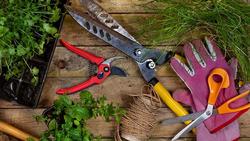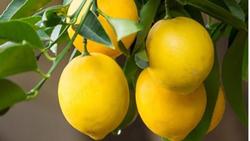Winter 2023-24
Gardener's checklist for winter
DECEMBER Plant Care Checklist

- Clean up the garden to avoid over-wintering diseases.
- Cover open compost bins with a tarp when the rains begin.
- Protect frost-sensitive garden plants such as succulents. If frost is predicted, cover or move them under a sheltering overhang. Use stakes around the plants to suspend the covering material so it doesn’t touch the foliage. Remove frost blankets during the day. Consider applying an anti-transpirant compound to plant foliage to seal in moisture.
- Wait until the weather warms up in March to prune off any frost damaged plant parts.
- Tour your landscape during a heavy rainfall. See where water is coming off your house and where there are eroding torrents. Think about ways to slow, spread, and sink the rain.
- Do not disturb soil – no digging, tilling, or walking on wet soil to avoid compacting. Shovel less, nurture more.
- Clean and sharpen tools - remove all soil and wash them with a 10% bleach solution to avoid spreading diseases. After drying them completely, apply a light layer of vegetable oil to prevent rusting.
- Reduce watering houseplants to avoid root rot over the winter when they are not actively growing.
- Ensure houseplants are not exposed to heat sources. Increase humidity by placing plants on pebble filled saucers.
- Feed the birds. Keep suet and seed feeders full.
Planting and propagating
- Take cuttings of succulents and create small container gardens for holiday gifts.
- Finish planting spring blooming bulbs.
- Continue planting native plants and bulbs and scattering annual wildflower seeds.
- Shop for the winter blooming Camellia sasanqua while it is in bloom.
Cutting and pruning
- Lightly prune any evergreen shrubs to keep pathways clear. Trees can be thinned to prevent storm/wind damage.
- Prune woody shrubs, hardy deciduous trees, dormant shade trees, and winter flowering shrubs just after bloom. Wait to prune spring flowering trees and shrubs until after they bloom.
- Bring trimmed bare branches indoors for a unique decorative element.
Feed and fertilize
- Lightly fertilize potted winter-growing succulents such as Aeonium, Aloe, and Kalanchoe if needed.
Pests and weeds
- Inspect citrus trees for snails and slugs, brown rot, and root rot.
- Inspect pine trees for bark beetles Learn more about bark beetles, pitch moths, western gall rust, and wood borers.
Edibles
- Plant bulb onions and rhubarb divisions.
- Watch for frost; cover sensitive crops as needed.
- Learn more about crops to plant in December and other activities in the edible garden.
Fire-smart Landscaping
- Plan for the upcoming fire season. Start by understanding the defensible space zones, especially the five feet surrounding the perimeter of your home. Remove combustible materials or vegetation in that area, especially near windows.
- Learn more about fire-smart defensible space zones.
JANUARY Plant Care Checklist

- Observe water runoff during a heavy rain and correct any drainage issues.
- Protect tender garden plants by covering them on frosty nights. Use stakes to keep material from touching foliage and remove the coverings when temperatures rise the next day. Consider applying an anti-transpirant compound to plant foliage to seal in moisture.
- Water plants (except succulents) before an anticipated frost.
- Avoid walking on or working in garden beds after heavy rains to avoid compacting the soil.
- Pick off old flowers from camellias and azaleas and clean up dropped flowers to reduce petal blight, a fungal disease. Do not add them to your compost pile.
- Clean, sharpen, and repair garden tools.
- Organize your tool shed.
- Revitalize houseplants by washing the leaves, inspecting for insects, and repotting them if necessary.
- Reduce watering of houseplants to avoid root rot, as most are not actively growing.
- Water outdoor plants if rainfall is scarce.
- Water outdoor plants that are not exposed to rain (under eaves, on covered decks, etc.).
- Feed the birds in your garden.
Planting and propagating
- Purchase and plant bare root trees, roses, vines and shrubs. Bare root plants are less costly and establish faster than plants in containers. Avoid planting in soggy soil.
- Divide and pot spring flowering perennials.
Cutting and pruning
- Prune and cut back perennials and ornamental grasses.
- Prune woody shrubs, deciduous trees, dormant trees, summer blooming vines, and winter flowering shrubs just after bloom. Wait to prune spring flowering trees and shrubs until after they bloom. Learn more about pruning.
- Prune roses. Remove and dispose all leaves and debris to prevent overwintering pests and disease. Do not add to home compost.
- After pruning, be sure to clean tools.
Pests and weeds
- Inspect pine trees for bark beetles Learn more about bark beetles, pitch moths, western gall rust, and wood borers.
- Inspect citrus trees for snails and slugs, brown rot, and root rot.
- Spray fruit trees and roses with horticultural oil to control pests.
Edibles
- Buy seeds.
- Prune fruit trees and grapes.
- Plant bare root fruit trees and shrubs, artichokes, asparagus, blackberries, grapes, onion starts, raspberries, rhubarb, and strawberries.
- Learn more about crops to plant in January and other activities in the edible garden.
Fire-smart Landscaping
- Remove any limbs 10 feet from the chimney or roof and maintain separation between trees or groups of trees.
- Learn more about Fire-smart Landscaping.
FEBRUARY Plant Care Checklist

- Inspect irrigation system for leaks and non-functioning emitters and sprayers. Run the system for a few minutes, paying close attention to which emitters are not working. Straighten lines and use a pin or needle to free any trapped grit in emitters. Make any other needed repairs or changes.
- Clean up old and dropped flowers from camellias and azaleas to reduce petal blight, a fungal disease. Do not add them to your compost pile.
- Avoid working in or walking on wet soil.
- Be alert to possible freezing temperatures and protect sensitive plants such as citrus and succulents. Learn more about frost.
- Apply organic fertilizer to citrus if needed.
- Repot houseplants and succulents in anticipation of spring growth.
Planting and propagating
- Finish planting bare root trees, shrubs, and roses before they break dormancy.
- Divide perennials such as daylily and yarrow.
Cutting and pruning
- Finish pruning dormant plants. Wait to prune back frost-damaged plants until warmer weather when you see whether they have recovered.
- Prune Japanese maples while they are winter dormant.
- Prune woody shrubs and evergreen trees (spruce, firs, junipers, yews, redwoods, and cypress), hardy deciduous trees, dormant shade trees, summer blooming vines, and winter flowering shrubs just after bloom. Wait to prune summer blooming trees and shrubs until after they bloom.
- Cut back woody shrubs to stimulate new growth. To rejuvenate leggy shrubs, cut to the ground one-third of the oldest stems each year.
- Prune ornamental grasses.
- Finish pruning roses and dispose of canes, leaves, and debris.
- After pruning, be sure to clean tools.
Pests and weeds
- Check plants for aphids as the weather warms. Remove infestations with a hard spray of water or insecticidal soap.
- Stay on top of weeds. Hand pull them or cut off at the soil line.
- Monitor tender new growth for snails and slugs. Hand pick or apply an iron phosphate bait which is safe to use around children, pets, and wildlife.
Edibles
- Use dormant oil spray on fruit trees if needed.
- Cut down cover crops if ready. Chop into pieces and dig into beds or put into compost pile.
- Plant artichokes, asparagus, broccoli, cabbage, cauliflower, celery, collard greens, leeks, onion starts, and rhubarb.
- Learn more about crops to plant in February and other activities in the edible garden.
